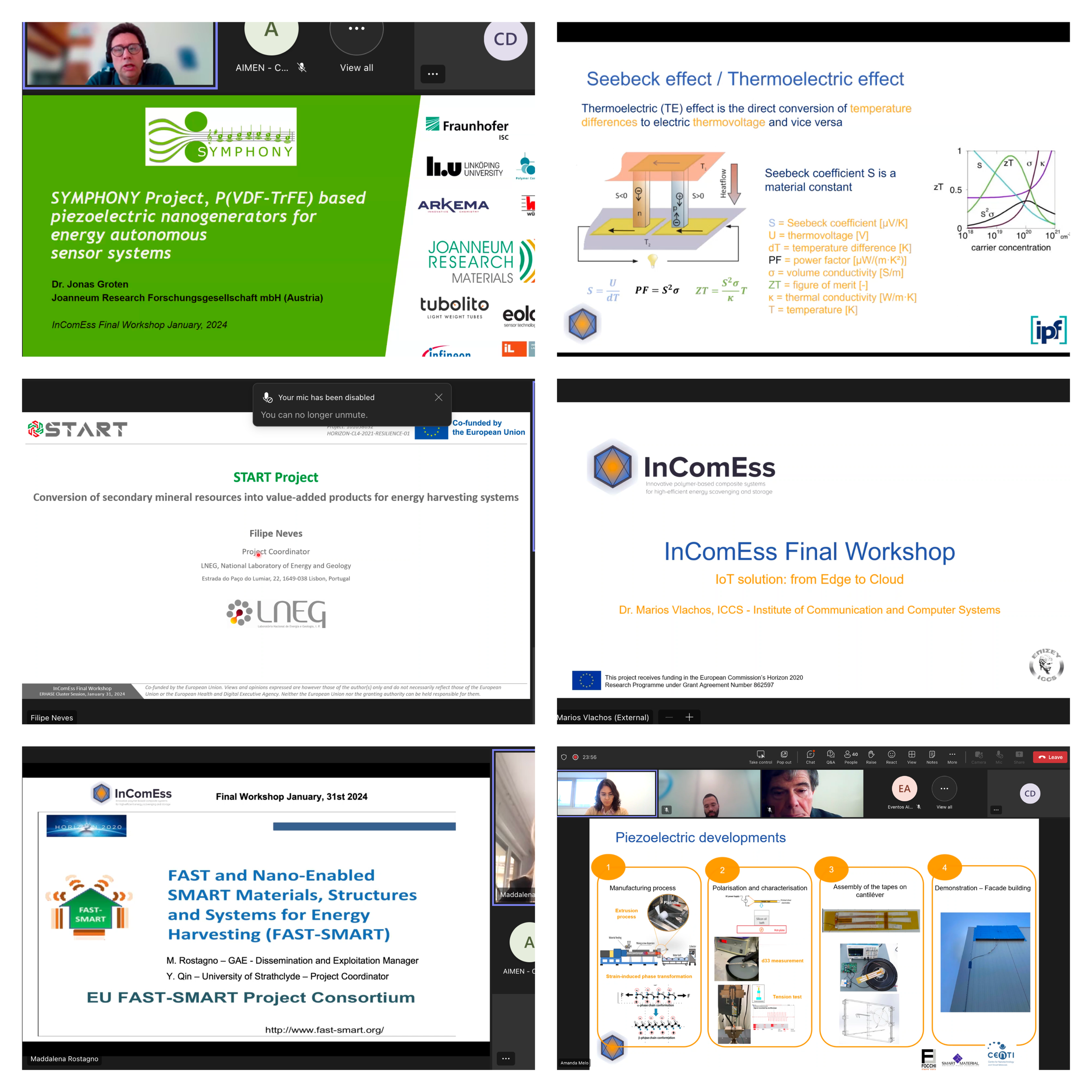Recapping the InComEss Final Workshop
On January 31, 2024, the InComEss consortium celebrated its concluding online event, the InComEss Final Workshop. 18 presentations, were delivered by InComEss key-experts, and an amazing lineup of invited speakers, covering a lot of ground around cutting-edge research findings on new energy harvesting systems.
Some key takeaways from the InComEss research results were:
The piezoelectric and thermoelectric energy harvesters developed in the project have demonstrated their ability to generate electricity upon mechanical vibrations and temperature differences, but their power output is still far away from the commercial solutions (based on lead or rare elements). Further improvements are required to overcome this obstacle which is still challenging.
The monolithic printed supercapacitors have demonstrated their capability to store the harvested energy when integrated with the conditioning circuit and generators.
The power conditioning circuit has been proven to increase energy transfer efficiency between generators and end-use electronics.
A miniaturized Fibre Optic Sensors (FOS) interrogator of low-power consumption was successfully developed and validated for Energy Harvesting use.
Bluetooth Wireless MEMS and FOS communications were optimized and integrated into an IoT gateway/platform for data monitoring.
In the Aeronautic use-case, the tests performed have validated the functioning of Wireless Energy Harvesting Systems (EHS). This was achieved by harvesting the available mechanical vibrations of the wing slat (with a lead-based piezoelectric generator) which was able to power the FOS interrogator/Wireless FOS and transmit data to an IoT platform.
The Automotive use-case also demonstrated the reliability of the Wireless EHS. This demo has confirmed it is possible to harvest the thermal waste on the vehicle’s exhaust system (by using an inorganic thermoelectric generator) to power fuel level sensor nodes and for monitoring sensor data transmitted by Bluetooth to an IoT platform.
The Building use-case has demonstrated the potential to include FBG in a façade envelope for Structural Health Monitoring (SHM). However, the demonstration of the piezoelectric generators failed during the tests (impact, rain, and wind) whose power output was too low for feeding the conditioner and electronics.
SYMPHONY, FAST-SMART and START EU funded projects, together with InComEss, form the ERHASE Cluster, and were invited to a dedicated session to present their research developments and results .
The event was an initiative of the InComess consortium designed to communicate important research achievements in new energy harvesting solutions beyond the project communities. Meant for professionals, students or simply anyone intrigued by smart materials and innovative ways to achieve energy efficiency. This work is more important than ever, as experts attempt to propose answers to crucial scientific questions regarding energy consumption, sustainability, and circularity.
A two-part video recorded at the event is available to watch on YouTube [Part 1], [Part 2]. After watching, if you have any other questions please do not hesitate to reach out.
The full list of presentations can be found on the workshop’s online agenda .
We would like to thank the presenters for their terrific work and express our appreciation for everyone who joined us last Wednesday.


